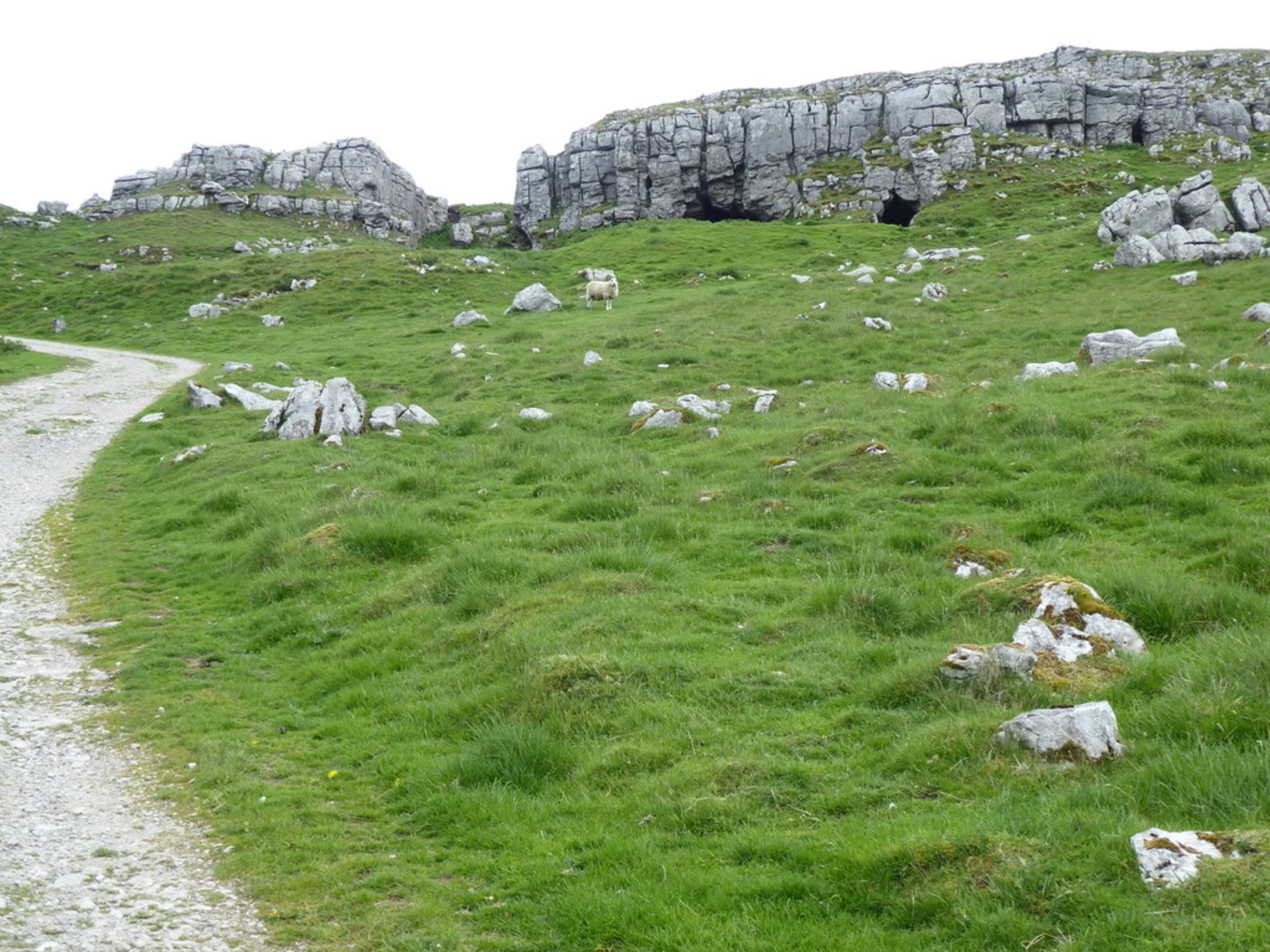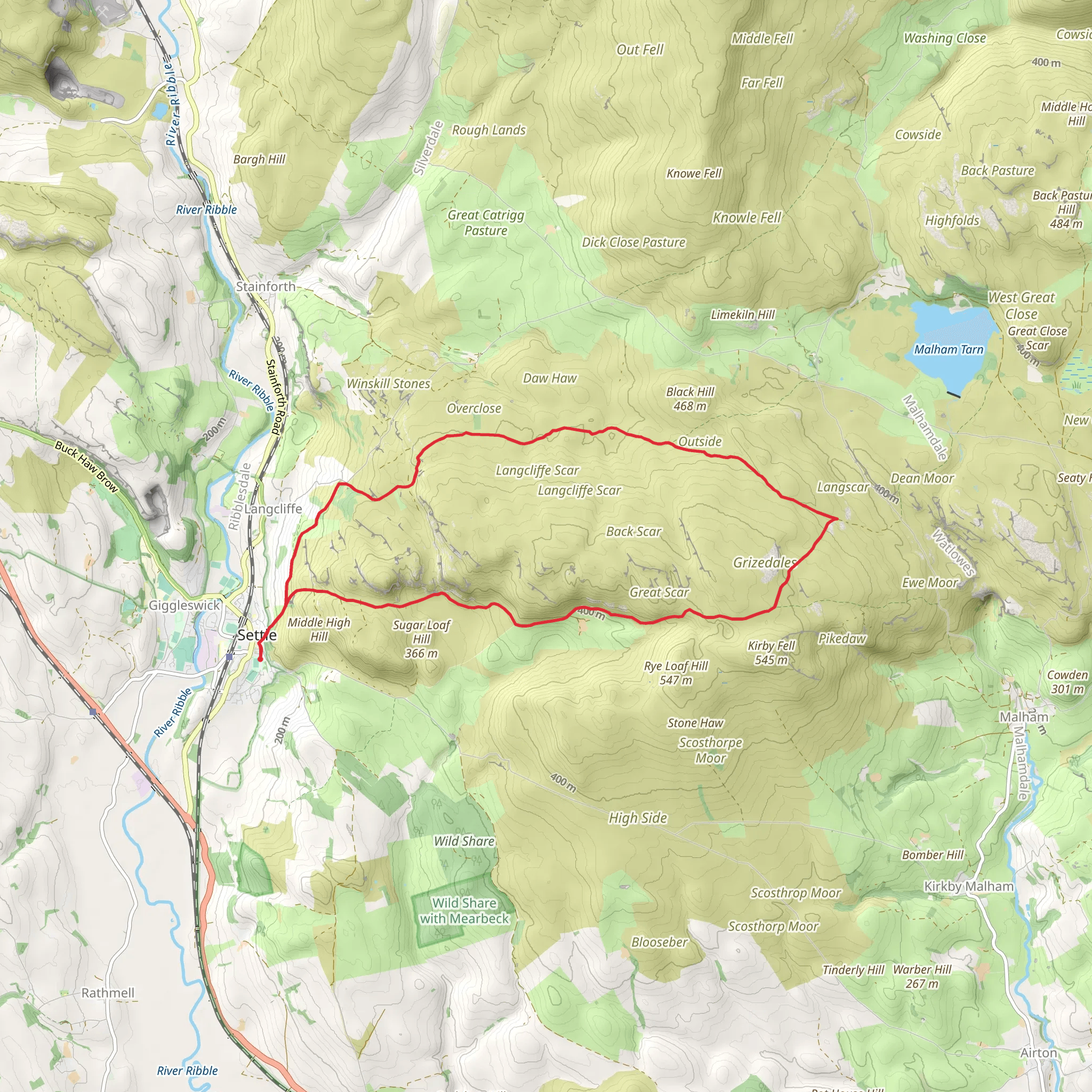Download
Preview
Add to list
More
15.8 km
~3 hrs 59 min
504 m
Loop
“Embark on the Settle Loop for 16 km of Yorkshire Dales' scenic beauty and historical intrigue.”
Starting near the charming town of Settle in North Yorkshire, England, the Settle Loop is a delightful 16 km (approximately 10 miles) circular trail that offers a moderate challenge with an elevation gain of around 500 meters (1,640 feet). This trail is perfect for those looking to experience the natural beauty and historical richness of the Yorkshire Dales.### Getting There To reach the trailhead, you can either drive or use public transport. If you're driving, Settle is accessible via the A65 road, and there are several parking options in the town. For those using public transport, Settle railway station is well-connected, with regular services from Leeds and Carlisle. From the station, it's a short walk to the start of the trail.### Trail Overview The Settle Loop begins near the town center, and you'll quickly find yourself immersed in the stunning landscapes of the Yorkshire Dales. The trail is well-marked, but it's always a good idea to have a reliable navigation tool like HiiKER to ensure you stay on track.### Key Sections and Landmarks#### Settle to Langcliffe Starting from Settle, the trail heads north towards the village of Langcliffe. This initial section is relatively gentle, allowing you to ease into the hike. As you walk, you'll pass through picturesque meadows and fields, with the River Ribble flowing nearby. Keep an eye out for the historic Langcliffe Mill, a reminder of the area's industrial past.#### Langcliffe to Malham Tarn From Langcliffe, the trail begins to ascend more steeply as you make your way towards Malham Tarn. This section offers some of the most breathtaking views of the hike, with panoramic vistas of the surrounding dales. Malham Tarn itself is a glacial lake and a designated National Nature Reserve, home to a variety of bird species and rare plants. This is a great spot to take a break and enjoy the serene environment.#### Malham Tarn to Jubilee Cave Continuing from Malham Tarn, the trail takes you towards Jubilee Cave. This part of the hike involves a mix of open moorland and limestone pavements, characteristic of the Yorkshire Dales. Jubilee Cave is an interesting landmark, known for its archaeological significance. Excavations have revealed that it was used by prehistoric humans, adding a layer of historical intrigue to your hike.#### Jubilee Cave to Victoria Cave From Jubilee Cave, the trail leads you to another fascinating site: Victoria Cave. Discovered in 1837, the cave has yielded numerous prehistoric artifacts, including bones of animals that lived during the last Ice Age. The cave is a testament to the rich history of human and animal life in the region.#### Victoria Cave to Settle The final stretch of the trail takes you back towards Settle. This descent offers more beautiful views and a chance to reflect on the diverse landscapes and historical sites you've encountered. As you approach Settle, you'll pass through more lush meadows and fields, eventually arriving back in the town where you started.### Flora and Fauna The Settle Loop is a haven for nature enthusiasts. Depending on the season, you might see wildflowers like bluebells and primroses, as well as a variety of bird species, including curlews and lapwings. The area is also home to small mammals like rabbits and hares, and if you're lucky, you might spot a red deer.### Preparation Tips Given the moderate difficulty of the trail, it's important to come prepared. Wear sturdy hiking boots, bring plenty of water, and pack some snacks or a picnic. Weather in the Yorkshire Dales can be unpredictable, so layers and waterproof clothing are advisable. Always check the weather forecast before setting out and let someone know your plans.The Settle Loop offers a perfect blend of natural beauty, historical landmarks, and moderate physical challenge, making it a rewarding experience for any hiker.
What to expect?
Activity types
Comments and Reviews
User comments, reviews and discussions about the Settle Loop, England.
4.0
average rating out of 5
1 rating(s)

